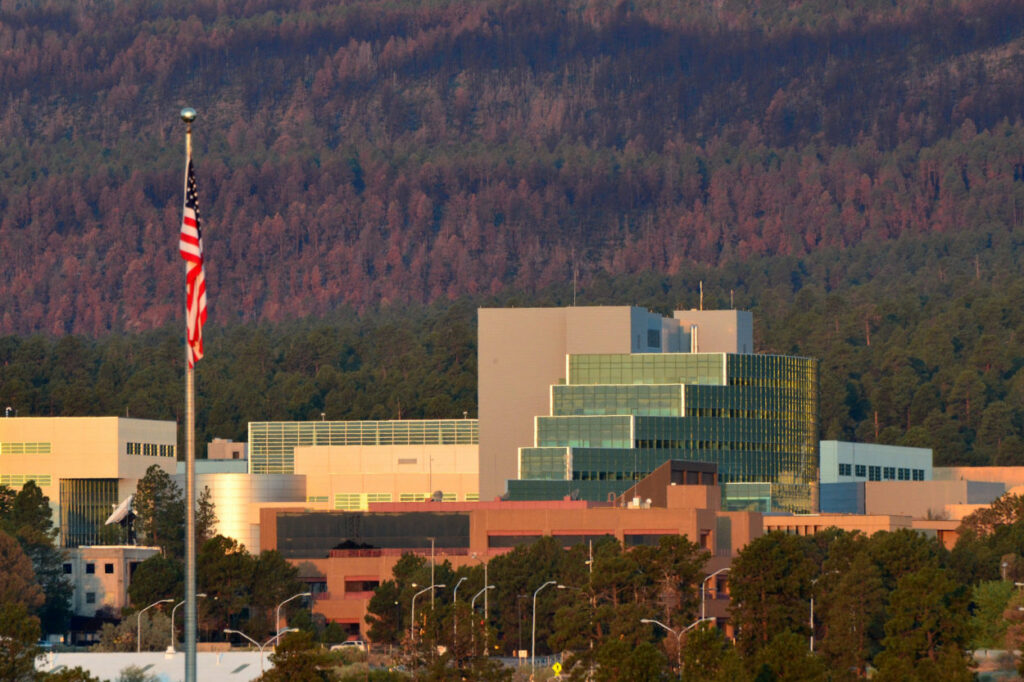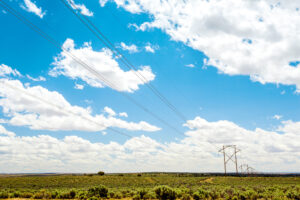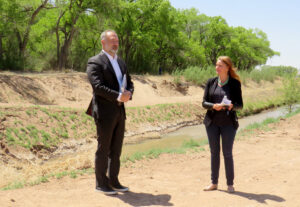Los Alamos scientists work on technique for estimating stress in earth’s crust from oil and gas activity

A new method developed by scientists at Los Alamos National Laboratory could reduce the costs of determining if proposed oil and natural gas activity could lead to earthquakes and which direction fractures are likely to occur during hydraulic fracturing.
A study published in Nature’s Communications Earth and Environment journal looked at a way to estimate the orientation of stress in the earth’s crust without doing the traditional borehole analysis or looking at past earthquake data.
Scientists focused on north-central Oklahoma, which has experienced earthquakes induced by the injection of produced water from the oil and gas operations, as well as north-central New Mexico, which was chosen to compare the Oklahoma results with an area straddling a continental rift around the Colorado Plateau.
The lead author on the study is Los Alamos scientist Andrew Delorey, who has spent years studying nonlinear elasticity. In an interview with NM Political Report, Delorey said it is easiest to explain nonlinear elasticity by first explaining linear elasticity. Comparing elasticity to an elastic band, he said the amount of resistance in the elastic band is proportional to how far it is pulled, so when an elastic band is pulled to double its length, the resistance also doubles.
But in nonlinear elasticity the amount of force needed to change the elastic band is not proportional to the change in length. Delorey gave the example of needing four times as much force to double the length of the elastic band.
During the study, scientists conducted a pump-probe experiment in which a low-frequency oscillation is used to strain the subsurface material. The elasticity is then monitored by measuring the travel time of a high-frequency probe. This high-frequency probe was applied at different points in the low-frequency oscillation.
Delorey said he was initially looking at how rocks become softer or stiffer when under the horizontal compression that occurs beneath the surface. This causes fractures to either open up or close and results in changes in the speed at which seismic waves pass through the rocks.
“We had the idea that we should look at how this varies…by the direction of the seismic wave. So in other words, does a wave that’s traveling south to north behave the same as going east to west…Does the rock have different properties when you look at it, from different directions? And when we discovered that they did, then we tried to do more work to see why the behavior is different in different directions. And we realized that it was aligned with the stress field, ” he said.
After that, the team worked to determine if that was a coincidence or not.
“And it turned out that where we measured it, it was always aligned with their stress field,” he said.
By looking at the nonlinear elasticity at different orientations, the scientists were able to estimate maximum horizontal compressive stress, or the amount of pressure from north-south orientation or east-west orientation that is pressing hardest on the rocks. This determines where fractures are most likely to be active. Analyzing this can determine where cracks will form in hydraulic fracturing and where earthquakes are more likely to occur as the result of injecting produced water or even carbon dioxide into the subsurface reservoirs.
Traditional analysis to determine maximum horizontal compressive stress relies on techniques like drilling small-diameter holes known as borehole breakout analysis or by looking at past earthquake data. But the borehole breakout analysis is expensive and not all regions have the data from past earthquakes. That is where the Los Alamos study comes in, providing an affordable way to analyze maximum horizontal compressive stress in areas that have not had much past earthquake activity.
Delorey said this method costs about 10 to 20 percent what it would cost to do a borehole breakout analysis.
“The reason why the oil and gas and other industries that work in the subsurface would be interested in this is because the stress field is an important parameter,” Delorey said.
He said in the subsurface the pressures are squeezing more in one direction than the other.
“And the reason why it’s important to be able to measure that is because it determines how fractures and faults will behave,” he said.
In terms of earthquakes, that determines which way the fault is going to slip. In terms of fracking, it determines which direction the cracks will form, he said. Delorey said the fractures caused by hydraulic fracturing will open in the direction that has the least compressive stress.
This also can be applied to carbon sequestration or injection of produced water, or waste water from oil and gas operations. Delorey said companies need to be careful about “generating too much seismicity,” which could lead to earthquakes.
For example, injection of produced water into the subsurface can increase pressure. A study earlier this year by Stanford University researchers found that depleted reservoirs where the pressure has decreased are less likely to have earthquakes occur when produced water is injected into them.
The Los Alamos study has broad implications for New Mexico. Delorey said in addition to the oil and gas industry, this technique could be used to evaluate sites for carbon sequestration as well as during discussions about subsurface storage of nuclear wastes.
As for the next steps for the research, Delorey said he would like to look at if these factors change over time, such as taking measurements on a monthly basis.
He said he would not expect a large change over time in areas like north-central New Mexico.
However, in areas where there is oil and gas activity or carbon sequestration, Delorey said the “stress field could be changed at least on a small scale quite a bit.”
This article was originally posted on Los Alamos scientists work on technique for estimating stress in earth’s crust from oil and gas activity







